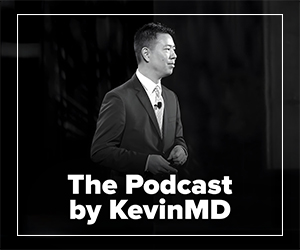In the past few weeks, there has been a question regarding my use of the hashtag #Nof1 along with how I end the majority of my posts and tweets: Health care is delivered at the N of 1.
One person even believed there might be a trademark infringement with the company N-of-1 who provides molecular testing for patients and then delivers evidenced-based medical recommendations for oncology patients. The reality is that, while the company N-of-1 provides services, the topic I speak about is how the evolution of health care is occurring.
This seed was planted in me during my clinical rotations in 1998–1999 while at the University of Wisconsin-Madison Carbone Comprehensive Cancer Center by the chair of the department, Dr. Minesh Mehta. There was a moment during my training in which our patients were experiencing a long wait time. The department was on edge, and everyone got extra intense when we needed to page Dr. Mehta to come and check on a patient se tup in radiation oncology. I remember Dr. Mehta walking into the room, calm, smiling, and took the time to introduce himself to the patient, their family and to address all of their questions despite others waiting.
When he was done, he stepped out of the room and asked me to follow him. He asked me why everyone seemed to be on edge. I told him the truth. Everyone was worried because patients are waiting, the schedule is behind, and we know you are busy. Dr. Mehta smiled at me, placed his hand on my shoulder, and told me a piece of magic:
No matter what else is going on, the world stops once you enter a room and are face to face with a patient and their family. You can only care for one patient at a time. That patient, in that room, at that moment is the only patient that matters. That is the secret to health care.
It was this message that he shared with me privately in the hallway that has made one of the biggest impacts to my career and journey in health care. From that point on, I made sure that my only focus was the patient in front of me, and that I ignored all other unnecessary interruptions.
A few years after that conversation as I was leading my first oncology program and was responsible for new cancer center development for the health system I was working for, I came across the following New England Journal article entitled: Determining Optimal Therapy — Randomized Trials In Individual Patients. The year was 2002, and the first time I saw the term N of 1 used in clinical research. In the years after that conversation, the 1986 NEJM article, and my own continuing research on the topic, the N of 1 has become a framework for the work I do. Whether it was to provide care models, clinical pathways, patient experience, clinical service lines, cancer centers, hospitals, outpatient imaging, radiology and pathology services, research grants for the National Cancer Institute or development of cancer centers and risk reduction facilities in China, all of my work has been to deliver care to patients at the N of 1.
The reality is that today, whether it is population health 1.0 or the few health systems and insurance companies trying to move into population health 2.0, their focus is still in delivering care at the “we” level. The “we” level means that when you go to see a physician today, that the medical care they recommend to you is based on people similar to you. Or the top of the pyramid, care based on research of populations at the 100,000+ level.
However, as technology continues to impact every other aspect of our lives, this method of performing care is going to radically change over the next eight to 10 years. (Many skeptics say longer, but I believe it will happen within eight years.) As we move into topics like genomics, proteomics, functional imaging and immunotherapies we will begin to move into delivering care at a 10,000 population level within the next two years.
As ecosystems continue to be built out and incorporated into seamless sharing of digital footprints, this will only continue to move further down the funnel, to begin delivering care based on people of 1,000. There will finally come a time when health care is not focused on the hospital, health care system or the insurance company and is solely focused on the people in communities and the patients they become over time.
When the food you eat, the air you breathe, the amount of sleep you obtain, where you work, how you commute home, whether you care for a loved one, the choices you make and the context of your life begin to accumulate effortlessly and seamlessly in a digital world, the center of health care will be each person.
Hospitals will only be needed for acute care. Everything else will be distributed across multiple channels that we have not even begun to realize. Move beyond mobile, and consider AR, VR and BR. The reason is that people, and the patients they become, do not care about the hospital they go to, the paint on the walls, or the Press Ganey results. Patients want care delivered specifically to them, for them, in consultation with them, to meet their expectations, and on a personal basis by an entity they trust.
Patients simply want their care delivered at the N of 1.
This future, the one I envision, and the one I have spent my entire career building towards, all stems back to the seed planted by Dr. Minesh Mehta in that hallway in 1998, and the NEJM article I read in 2002. My fundamental belief, and the one I have heard patients all around the world articulate to me, is the one I describe.
The future will be here before we know it. It has already begun. It is only going to accelerate from this point forward. Within the next eight years, health care as we know it will end.
The new health care will begin — health care delivered at the N of 1.
Andy DeLao is a health care marketing executive who blogs at CancerGeek.
Image credit: Shutterstock.com























![How should kratom be regulated? [PODCAST]](https://kevinmd.com/wp-content/uploads/Design-2-190x100.jpg)



![Understanding the unseen role of back-to-school diagnostics [PODCAST]](https://kevinmd.com/wp-content/uploads/Design-3-1-190x100.jpg)

